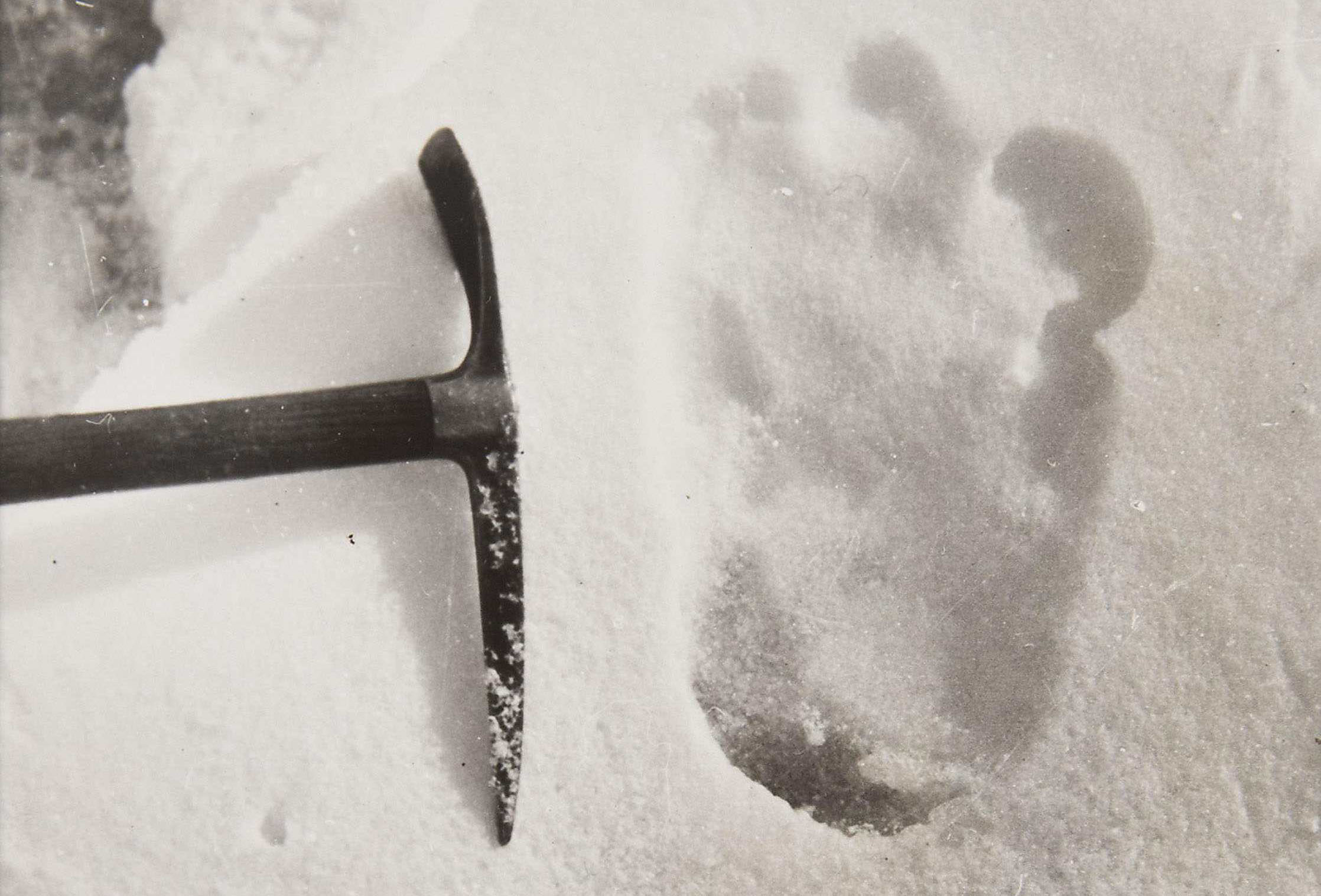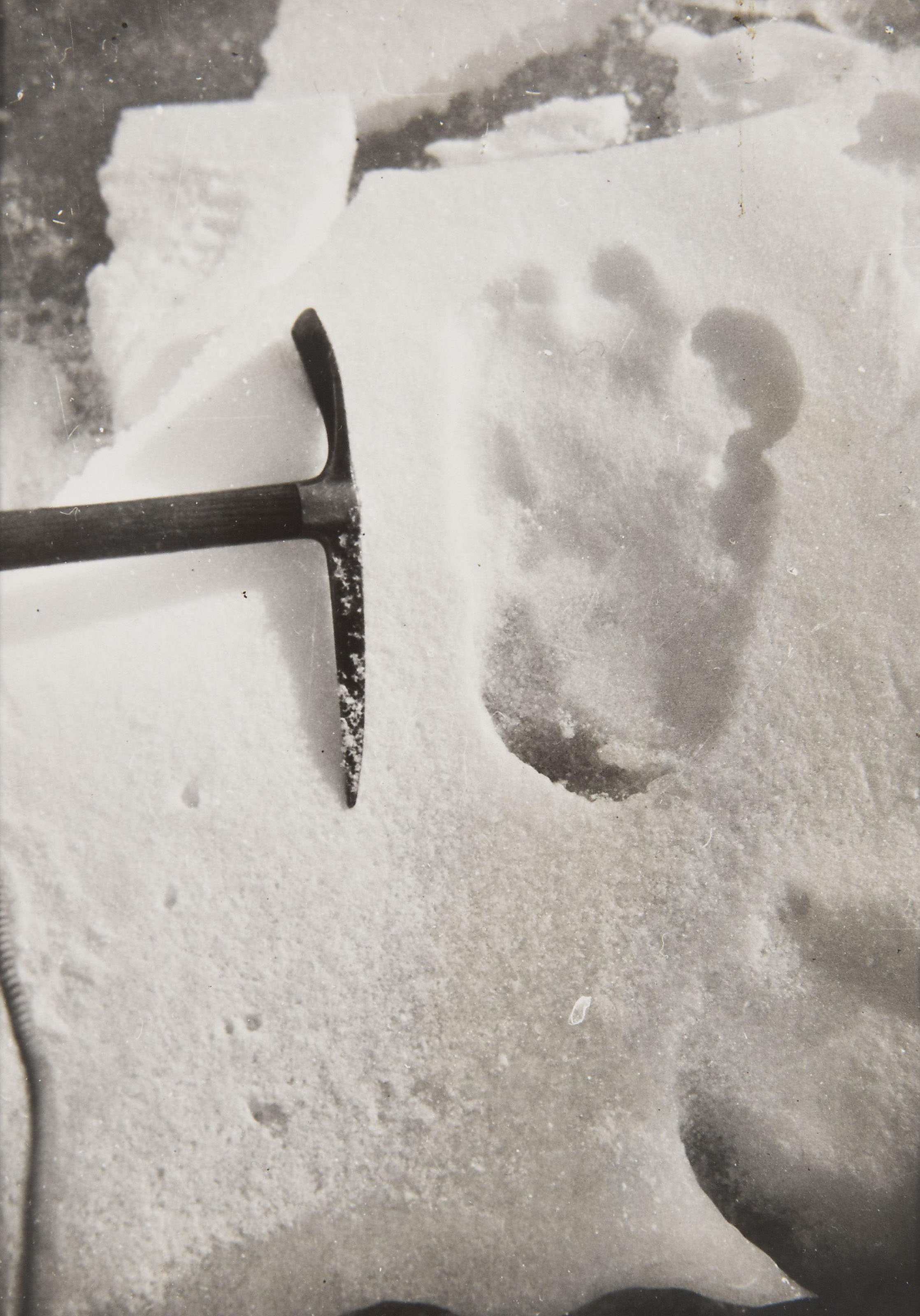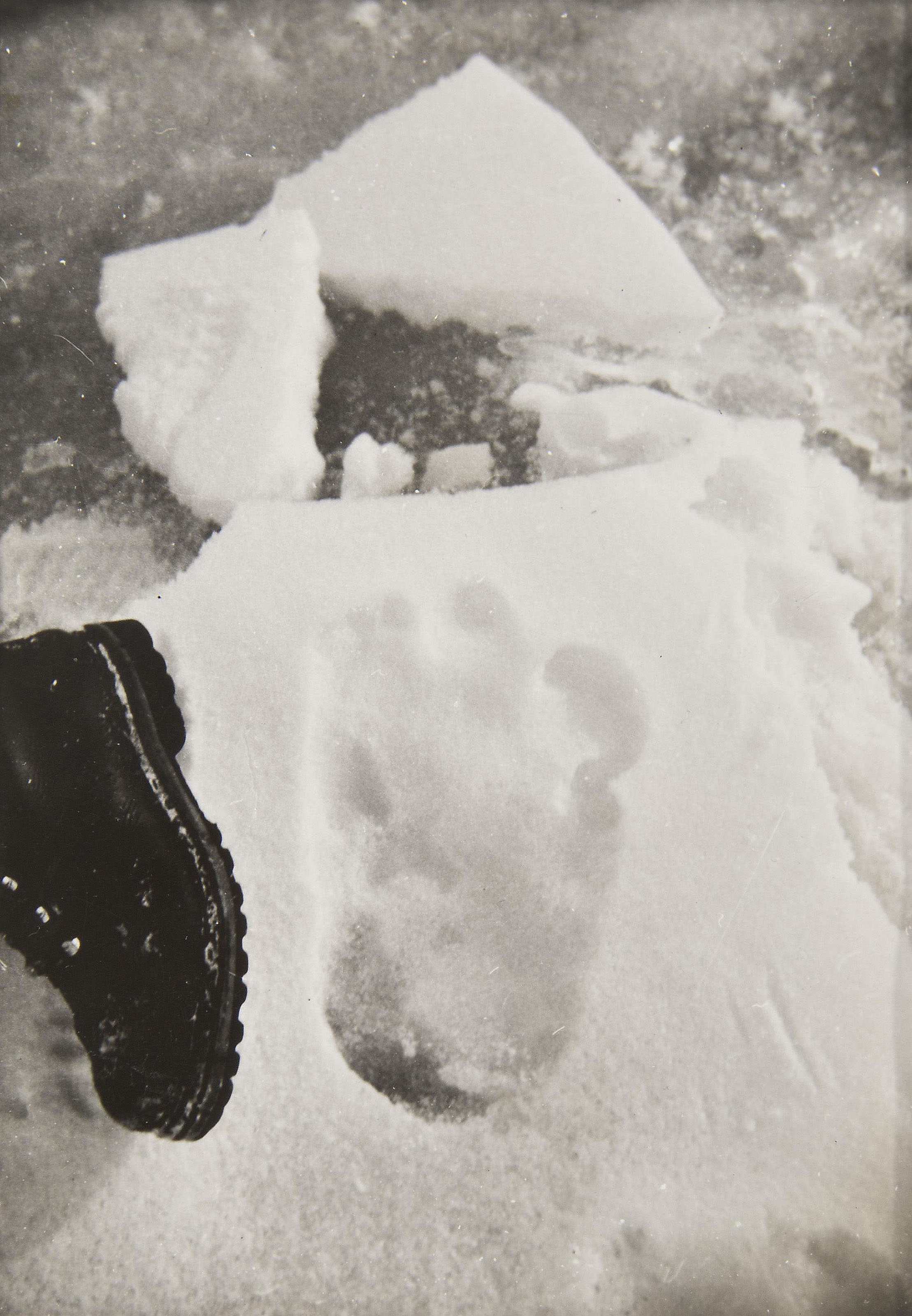1951, November 8: The Shipton Photograph
Though stories had been occasionally published for decades about the strange footprints being seen in the Himalaya mountain range of Asia, famous for its gigantic mountains, the tales did not truly capture worldwide public attention until 1952... when the following photograph was first published.

Strange Himalayan footprint. [Larger version here]
Despite how iconic the photo became as representing the hairy wildman of the Himalayas -- aka "The Abominable Snowman," or "Yeti" (which is the most commonly mentioned native name for the creature) -- very little actual detail is generally given regarding it.
I went looking for the two earliest sources on the matter, namely an article called "The World's Most Mysterious Footprints" run in Popular Science magazine in 1952, and The Mount Everest Reconnaissance Expedition 1951, which documents the trip during which the prints were found which was written and published in 1952 by Eric Shipton, the mountaineer who took the photo. Along the way, I found two more useful sources by accident. One is an article specifically about the prints by Eric Shipton, and run in a San Francisco newspaper at the time; the other is a handwritten note from one of the other mountaineers on the trip, describing the strange prints.
Here's What Happened
Many people had tried to climb Mount Everest, and all had failed. All existing routes were on the Northern side of the mountain, however, so a British expedition set out in 1951 to survey the South-Western side of the peak, to see if there might be a better climbing path to reach the top later.
The team initially consisted of the British climbers Eric Shipton (the expedition's leader), Bill Murray, Tom Bourdillon, and W.H. Ward. They were accompanied by a group of native Sherpas who carried supplies; the foreman in control of this group was a Sherpa named Angtarkay, who was an old friend of Shipton's, having climbed with him before. They were also joined by an officer from the Geological Survey of India team, Dr. Dutt, and, after the expedition was already under way, they were joined by Norgay Tenzing (whom they called "Sen Tensing"), another well known Sherpa who had assisted in many previous climbs, and who was also a friend of Shipton's. The expedition began on August 27th.
On November 8, 1951, Shipton, Ward, and Tensing had just crossed a pass and were descending down a glacier in the Menlung basin, when they came across the line of strange prints. Tensing unhesitently identified the tracks as belonging to a "Yeti." Shipton, who had seen prints like this in the Himalayas before, realized they were relatively fresh, likely having been made in the past 24 hours... some had not become distorted by melting yet, so he immediately took pictures of the best print he could find.




Eric Shipton's photos (that's Michael Ward standing to the right above). [Larger versions here]
The prints had been discovered at the 19,000 foot level. The prints were a little over twelve inches long, and wider than the men's boots (compare Ward's trail above to the unknown trail he's looking at). Shipton noted three small toes and one great toe, though the impression of a fifth pinky toe might just be visible in the shots.
It would seem the rest of the team caught up to the three men before they explored the trail a bit, for Tom Bourdillon later wrote a friend a note about the tracks that explained they appeared to have come from over a secondary pass up about 19,500 feet, and then descended down the glacier. The men followed the trail for about a mile, and saw a place where the unknown creature had jumped across a crevasse; the prints on the other side clearly showed where the creature had dug its toes in on landing. Eventually, however, the group had to get back to the official business they were there for, and the mysterious trail was left behind.
News about the expedition -- and the strange footprints -- became public in 1952, both with the publication of Shipton's book about the trip (The Mount Everest Reconnaissance Expedition 1951) and an article he wrote specifically about the footprints he photographed, as well as the legends of the Yeti told of in the Himalayas.
Shipton, in his book and later article, never specifically states what he thought might be making the tracks, but disputes critics that tried to claim the prints belonged to a bear or langur monkey. The Natural History Museum in London had trotted out a bear from the Himalayas for a walk on sand so they could compare the results to the tracks in the photos; they had to state it was not a match. As for langur monkeys, as Shipton points out, the footprints of the largest of the langurs is no more than eight inches in length; and at 19,000 feet there was no food for them to survive on (langurs are plant eaters).
Shipton also found himself having to seriously consider what Sen Tensing had told him of his own sighting of one of the Yeti at a distance of just 25 yards, which he described as standing erect about five feet six inches tall, covered head to toe with reddish brown hair except for a hairless face, and possessing a pointed head. Shipton had to admit that the Sherpas, who live in the area after all, are familiar with bears and langurs; so he found it hard to believe that Tensing (or any other native) would have trouble identifying these creatures at 25 yards. This left the English mountaineer with no good idea what the Yeti might actually be... but, since he and others were going to continue exploring the Himalayas, it seemed likely that someday someone would stumble upon the answer.
Anomalies -- the Strange & Unexplained, as well as my other website -- Monsters Here & There -- are supported by patrons, people like you! All new Anomalies articles are now posted for my patrons only, along with exclusive content made just for them. You can become a patron for just $1 a month!
|








